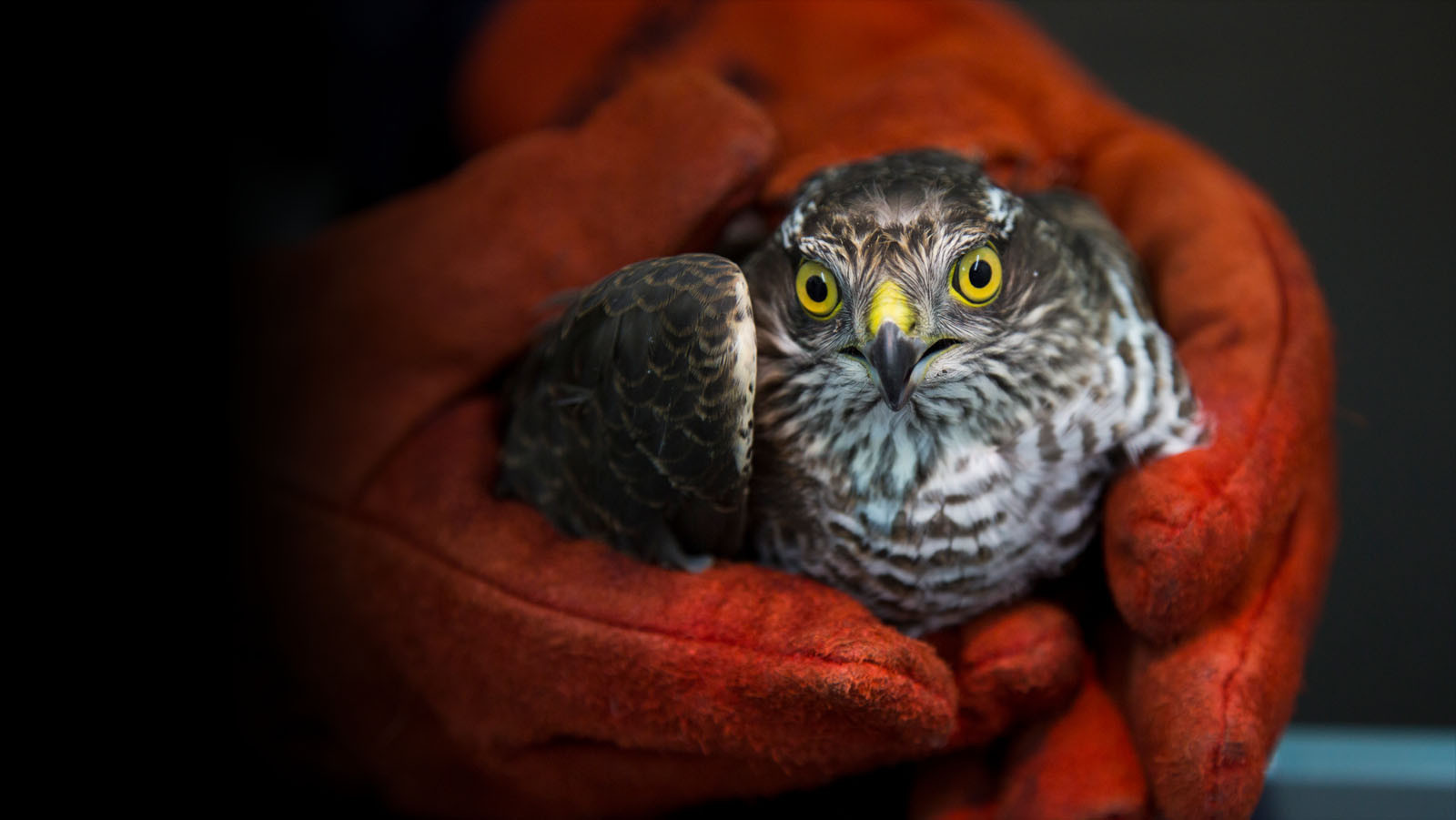Raptors
There is a chance that it may have been hit by a car. Carefully, pick up the bird, being sure to avoid the talons. The easiest and safest way to do this is by wrapping a towel around the body. Then, the bird and towel can be placed in a box or cat carrier. Keep the bird in a dark and quiet place and bring it to the Wildlife Aid Foundation, as soon as possible.
The bird has probably flown into the glass and may be concussed. Carefully, pick up the bird, being sure to avoid the talons. The easiest and safest way to do this is by wrapping a towel around the body. Place it in a dark, ventilated box and keep it quiet for at least 2 hours. After 2 hours, check on the bird. If it seems to be improved, try opening the box, in your garden. If the bird does not fly, it will need to be taken to your local wildlife rescue centre.
Carefully, pick up the bird, being sure to avoid the talons. The easiest and safest way to do this is by wrapping a towel around the body. Then, the bird and towel can be placed in a box or cat carrier. Keep the bird in a dark and quiet place and take it to your local wildlife rescue, as soon as possible.
Please, try and gently wrap the bird in a small towel or cloth to keep it calm. Call the Wildlife Aid Foundation and we will send someone out to help. Try to remove the bird from the main body of netting/wire, avoiding the sharp talons and the beak. Once it is free, carefully pick up the bird. The easiest and safest way to do this is by wrapping a towel around the body. Then the bird and towel can be placed in a box or cat carrier. Keep the bird in a dark and quiet place and bring it to the Wildlife Aid Foundation, as soon as possible.
If it is a BTO ring and the bird is not injured, you can register the sighting on the BTO website. If it is a private ring or the bird is injured, please, take the bird to your local wildlife centre. We will then contact the IBR (Independent Bird Register) to find out the owner’s details. Alternatively, if you cannot get the bird to us, you can call the IBR, yourself.
If possible, you should try lifting the bird up to as high a branch as you can reach and observe it from a distance. Use thick gloves when you pick the bird up, as they have very sharp talons! The best time to check on the bird is near dusk, when the parents should arrive to feed it. If the parents do not visit it with food, please, contact the Wildlife Aid Foundation. It is likely that the bird will need to come in to be fed.
If the bird is very wobbly and seems unwell, please, keep it warm and quiet and bring it to us, as soon as possible. Pick the bird up in a towel or with gloves, as the talons and beak can cause injury, and place it in a ventilated box or pet carrier.
Note: If a dead bird has a BTO (British Trust for Ornithology) ring, please, remove the ring and return it to the BTO for tracking *BTO link*.
Turn off all lights and leave the main door open. It is important that everyone leaves the area for at least an hour to give the bird the confidence to attempt to leave. Excluding owls, birds of prey will not fly at night, so this does need to be during the day.
With birds of prey, such as kestrels and sparrowhawks, food will not lure them out, as they are hunters of live birds. Dog food, etc., must not be put down, as it can be very harmful to them.
If the bird does not leave, you will need to contact us or your local wildlife rescue centre for assistance. A photo will be needed of the bird and the area, itself. The dimensions of the space the bird is in, e.g. height, square footage etc., will also be required.
Useful contacts
I.B.R. (Independent Bird Register): 01748 830112
Raptor Rescue: 0870 241 0609
BTO: www.bto.org
